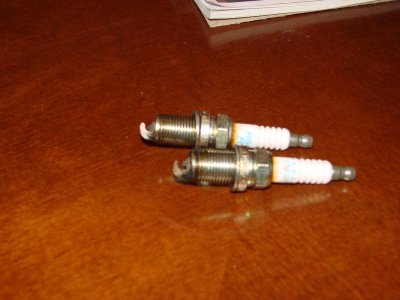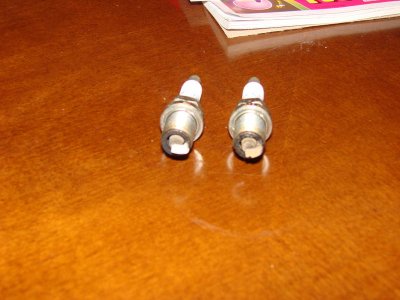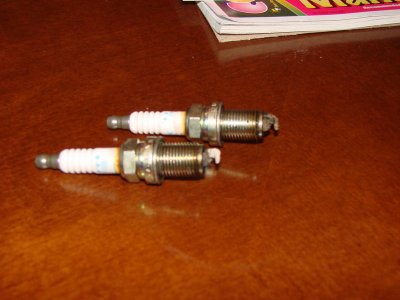For quite some time now, I have been having a oil consumption issue that I can't seem to solve. The car will go thru oil at an alarming rate with no signs of where it is going. I'm hoping that if I give an overview and slight bit of history, someone with more knowledge than me will be able to give me an idea as to what is wrong.
As many of you know, my car had one of the beta versions of the BBSC. Well, things didn't go to well with it and I ended up having the engine rebuilt by an NSX master tech @ 49k miles.
I had no problems for a couple of years with it. Then in the past year or two I have noticed that it seemed to be going thru a lot of oil between changes. Now when I had my Integra, it NEVER burned a drop of oil and NEVER required the addition of any between changes. That is what has/had me so concerned about the NSX having a lust for it.
Granted, the car was strictly a weekend car, or even less usage than that at times, for most of its life with me. Therefore, the oil probably got changed 3-4 times a year. Between those changes, I would have to make sure I kept a few bottles with me at all times. I could easily have to add 3 quarts between changes. If the car was filled to anywhere between the two spots on the dipstick and I drove it for a couple of hundred miles, I would need to add more when I got to destination. That is a scary feeling not knowing how far you can drive till you will be low on oil.:frown:
The car never put a single drop in my garage on the floor or put out any blue or white smoke out of the exhaust.
So, when I got a new DD, I decided to pull the covers and replace the gaskets, plugs, fuet filter and do a compression check.
If memory serves far left plug on front and rear banks gave higher compression #'s than the other 4. The other 4 were with the 10% range. The electrodes of the plugs that came out of those cylinders looked horrible. They were covered in oil(?) and gunk and overall looked worn out. The others actually looked great.(see pics below of the bad plugs).
Well, after 4 months of waiting around, I finally got it back together the other night.
Well, once I finally got it started, I did notice quite a bit of smoke coming from the rear cam cover area. Not having a mirror or being able to get under the car, I wasn't able to exactly pinpoint where it was coming from. I let it run for a few minutes and it continued to smoke. I turned it off and let it set and then did it again with the same results. I also now have a CEL with a code 42 which is a rear O2 sensor. I have been told that when I put in new plugs that the problem would be more obvious than it would be with the worn out plugs.
Today, I started it up and got a slight bit visible vapor fumes out of the exhaust. I let it idle for ~15 minutes and the vapors disappeared. I then got in it and reved the engine and THEN I got some light puffs of very light bluish smoke out of the pipes.
I don't think it would be worth getting a new O2 sensor right now as it would probably get caked up and go bad for the same reason that the other one did that tripped the CEL.
The car now has ~76k miles.
My driving habits are VERY conservative.
Anyone have any ideas? Maybe a leakdown test to give a better idea?
TIA
As many of you know, my car had one of the beta versions of the BBSC. Well, things didn't go to well with it and I ended up having the engine rebuilt by an NSX master tech @ 49k miles.
I had no problems for a couple of years with it. Then in the past year or two I have noticed that it seemed to be going thru a lot of oil between changes. Now when I had my Integra, it NEVER burned a drop of oil and NEVER required the addition of any between changes. That is what has/had me so concerned about the NSX having a lust for it.
Granted, the car was strictly a weekend car, or even less usage than that at times, for most of its life with me. Therefore, the oil probably got changed 3-4 times a year. Between those changes, I would have to make sure I kept a few bottles with me at all times. I could easily have to add 3 quarts between changes. If the car was filled to anywhere between the two spots on the dipstick and I drove it for a couple of hundred miles, I would need to add more when I got to destination. That is a scary feeling not knowing how far you can drive till you will be low on oil.:frown:
The car never put a single drop in my garage on the floor or put out any blue or white smoke out of the exhaust.
So, when I got a new DD, I decided to pull the covers and replace the gaskets, plugs, fuet filter and do a compression check.
If memory serves far left plug on front and rear banks gave higher compression #'s than the other 4. The other 4 were with the 10% range. The electrodes of the plugs that came out of those cylinders looked horrible. They were covered in oil(?) and gunk and overall looked worn out. The others actually looked great.(see pics below of the bad plugs).
Well, after 4 months of waiting around, I finally got it back together the other night.
Well, once I finally got it started, I did notice quite a bit of smoke coming from the rear cam cover area. Not having a mirror or being able to get under the car, I wasn't able to exactly pinpoint where it was coming from. I let it run for a few minutes and it continued to smoke. I turned it off and let it set and then did it again with the same results. I also now have a CEL with a code 42 which is a rear O2 sensor. I have been told that when I put in new plugs that the problem would be more obvious than it would be with the worn out plugs.
Today, I started it up and got a slight bit visible vapor fumes out of the exhaust. I let it idle for ~15 minutes and the vapors disappeared. I then got in it and reved the engine and THEN I got some light puffs of very light bluish smoke out of the pipes.
I don't think it would be worth getting a new O2 sensor right now as it would probably get caked up and go bad for the same reason that the other one did that tripped the CEL.
The car now has ~76k miles.
My driving habits are VERY conservative.
Anyone have any ideas? Maybe a leakdown test to give a better idea?
TIA






